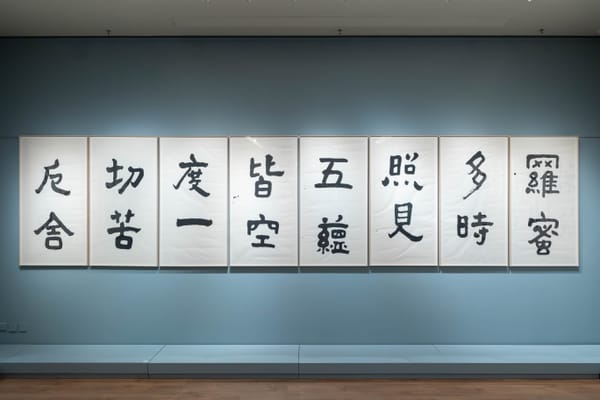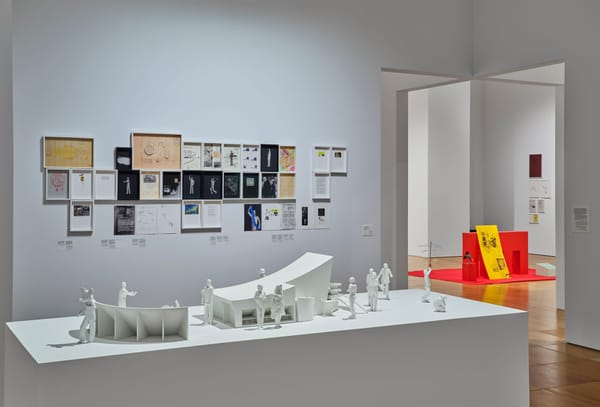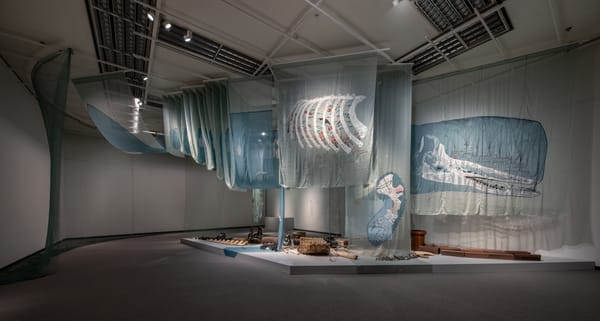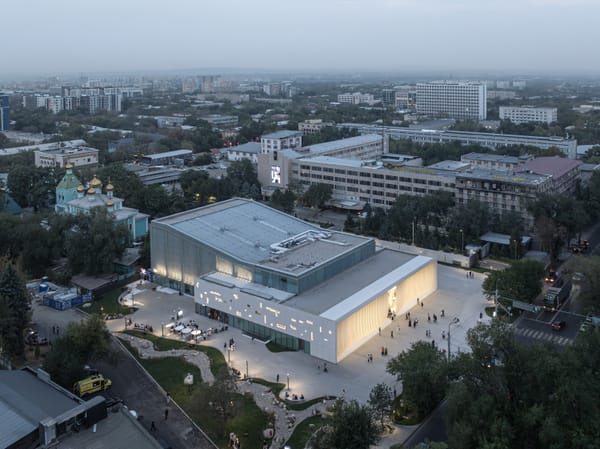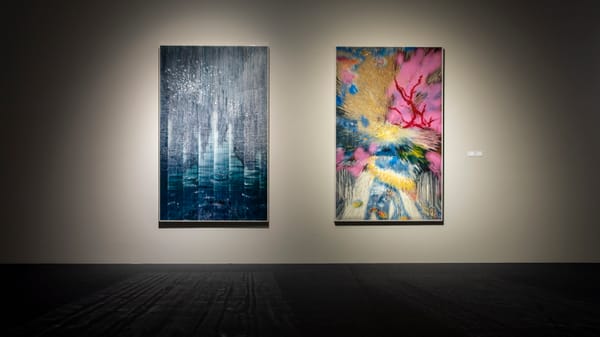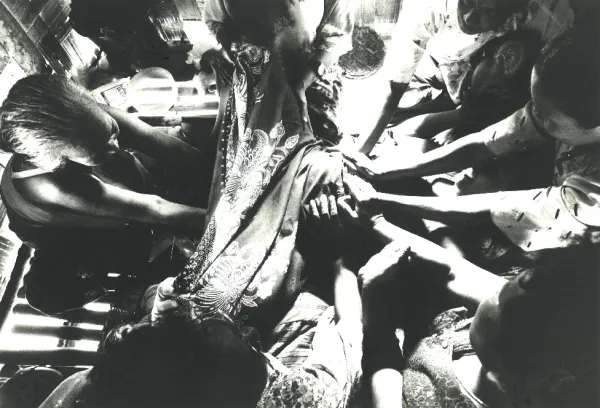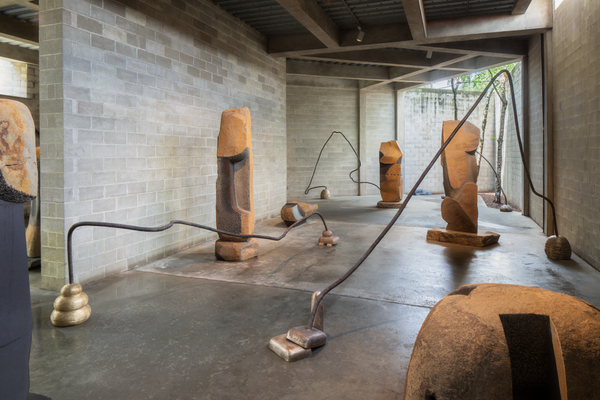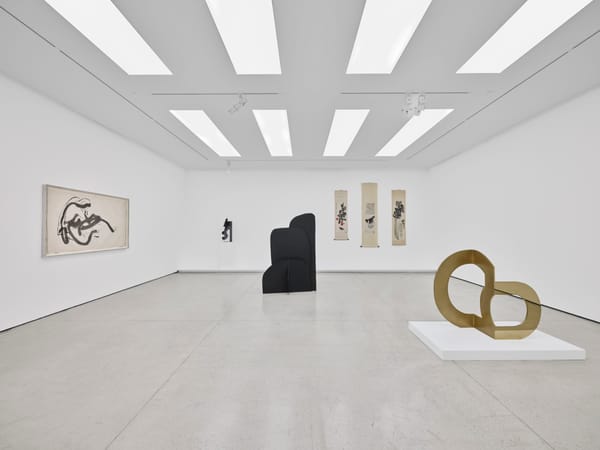Shows
“Layered Medium: We Are in Open Circuits” at Manarat Al Saadiyat
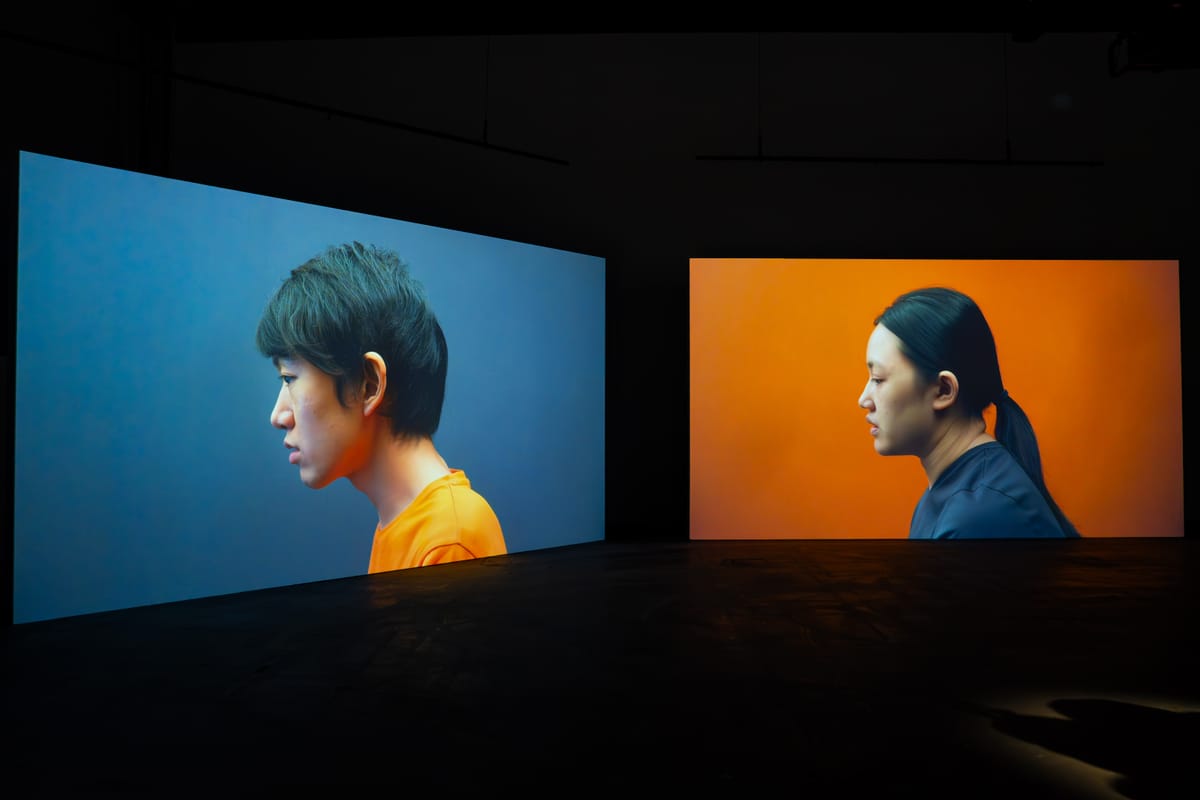
Layered Medium: We Are in Open Circuits
Manarat Al Saadiyat
Abu Dhabi
May 16–Jun 30, 2025
As art moves across geographies, its embedded ideologies encounter new viewers and contexts, gaining new layers of meaning. This ongoing process of cultural transmission underpinned “Layered Medium: We are in Open Circuits,” the first major showcase of Korean contemporary art in the Gulf, co-curated by Maya El Khalil and Kyung-Hwan Yeo. Staged at Abu Dhabi’s Manarat Al Saadiyat, the exhibition charted how Korean artists navigated social, political, and technological shifts from the 1960s to today.
Nam June Paik’s Self Portrait Dharma Wheel (1998) opened the show. An assemblage of vintage TV screens placed in a wheelchair, the work anchored the exhibition’s introductory section, which was devoted to artists who experimented with emerging technologies. Paik, widely hailed as the father of video art, pioneered the artistic use of televisions which were becoming commonplace in households in the 1960s—a shift that laid the groundwork for new media art while introducing new conceptual frameworks that critiqued and repurposed mass culture.
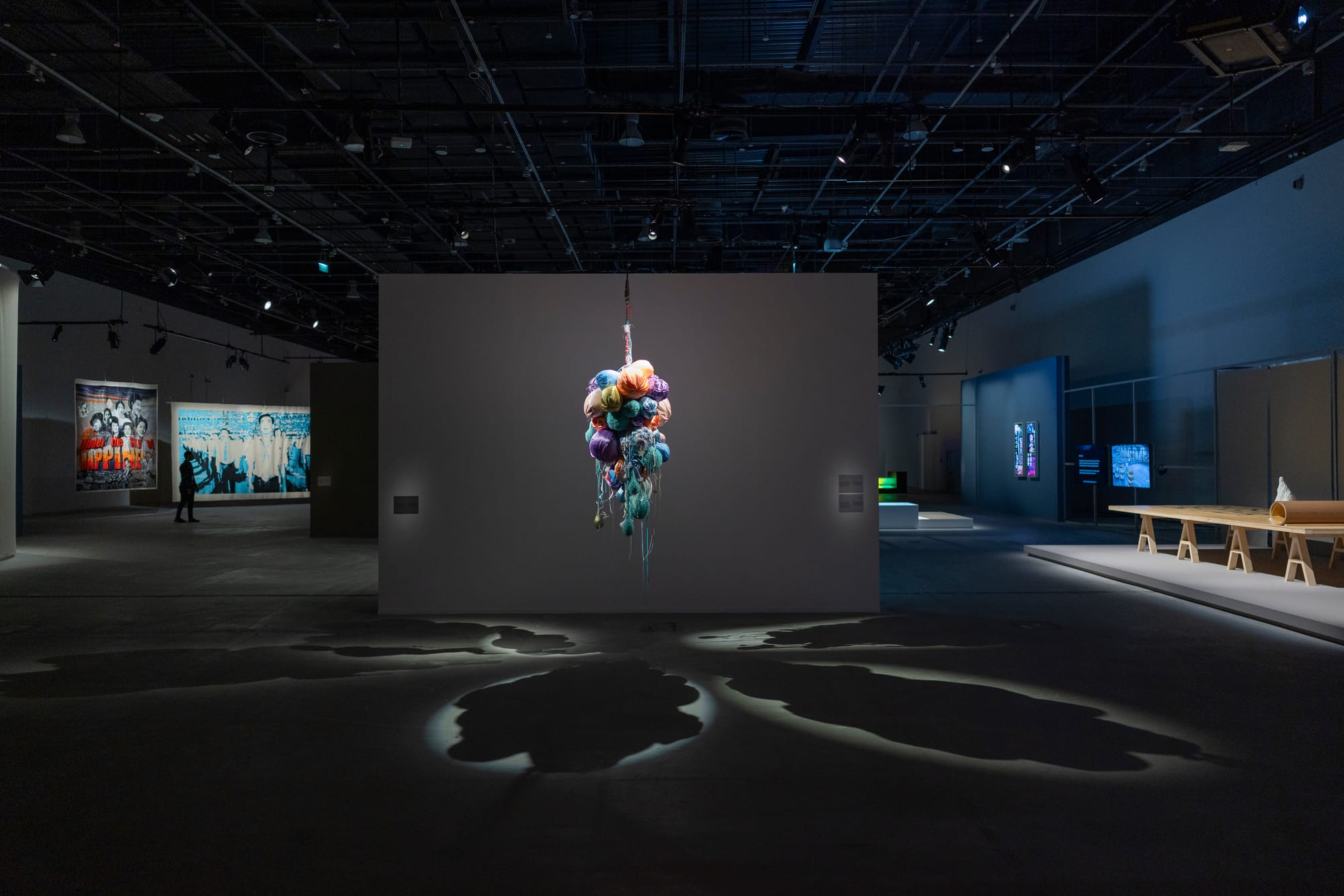
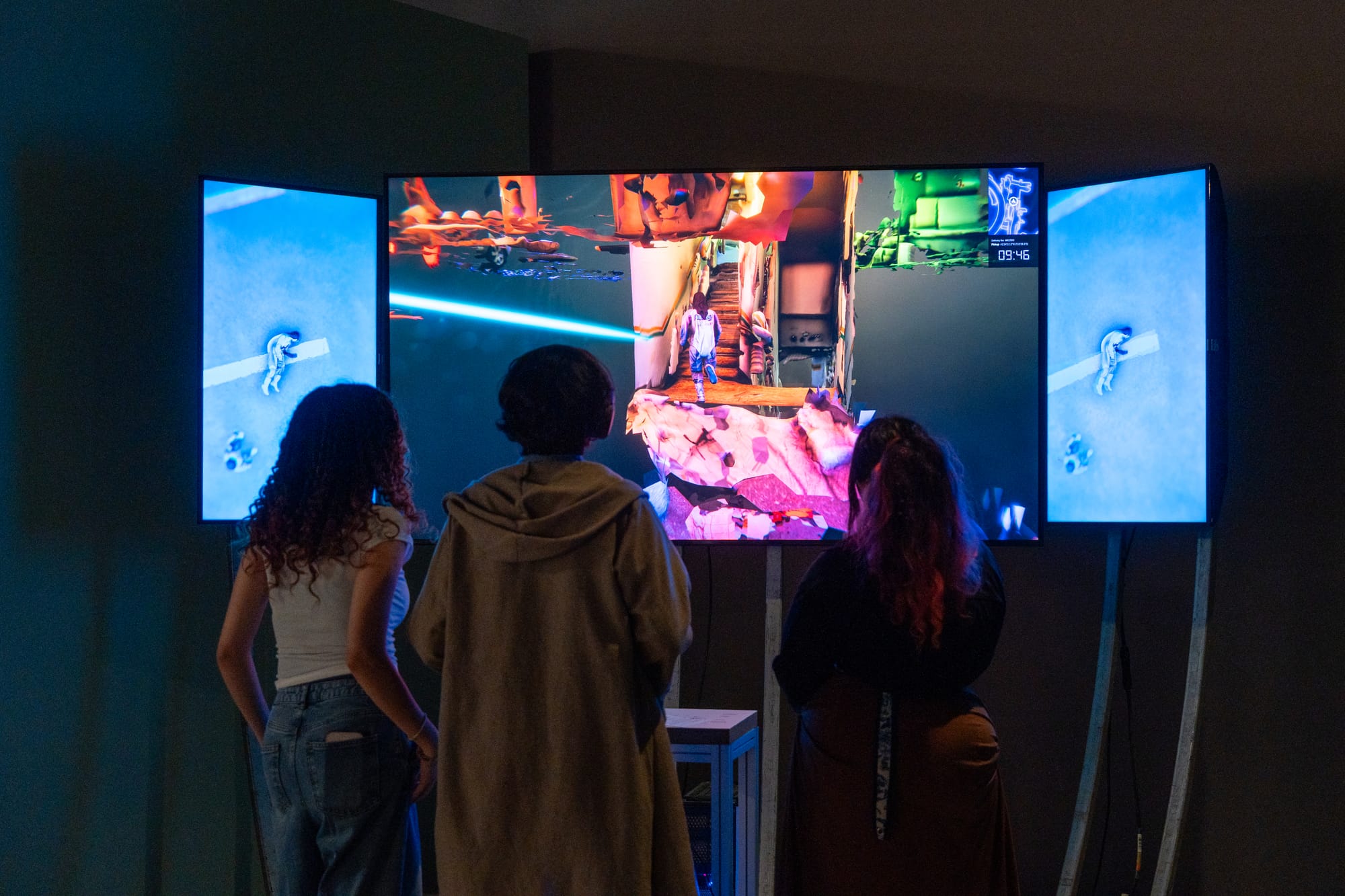
The following sections expanded the definition of “medium” beyond object, positioning the body, space, and societal structures as artistic material. In his The Method of Drawing series (1976– ), which began during Korea’s period of authoritarianism in the 1970s, Lee Kun-Yong explores the body as a site of contradictions. Painted with his back turned to the canvas, Lee’s intuitive mark-making is driven by bodily sensation and the limitations of mobility and vision; in his work, the body registers itself as both presence and void on the canvas.
Lee’s inclination toward more embodied forms of making were echoed in Min Oh’s Étude for Étude (2018), a video work that strips a classical symphony down to just human voices. El Khalil explained in her curatorial statement how, in this duet, the artist draws attention to human breath as well as the invisible labor behind musical production. Just as performers mimicked musical passages without instruments, established art forms and mediums of expression are deconstructed to their very fundamental elements.
Another artist considering music as a tool for connection is Sojung Jun, who engages with the geopolitical realities of the divided Korean peninsula. In her film Early Arrival of Future (2015), she stages a duet between North and South Korean pianists. This quest for a space for dialogue is further developed in Green Screen (2021), a film that reimagines the DMZ—a militarized zone of unresolved political tension situated between North and South—as an idealized ecological sanctuary. By depicting these utopian, liminal spaces between reality and aspiration, Jun explores how art can navigate moments marked by disparities.
Building on artists’ connections and reimaginings within contested historical sites, the exhibition culminated in an exploration of locality in contemporary urban landscapes. Ayoung Kim’s film Delivery Dancer’s Sphere (2022), and its accompanying video game, blend real-life footage and CGI renderings of Seoul to build a labyrinthine cityscape. In following a female delivery driver racing against an app’s algorithmic demands, the work captures the urgency of urban life and exposes the technological anxieties of digital labor integral to 21st-century global capitalism.
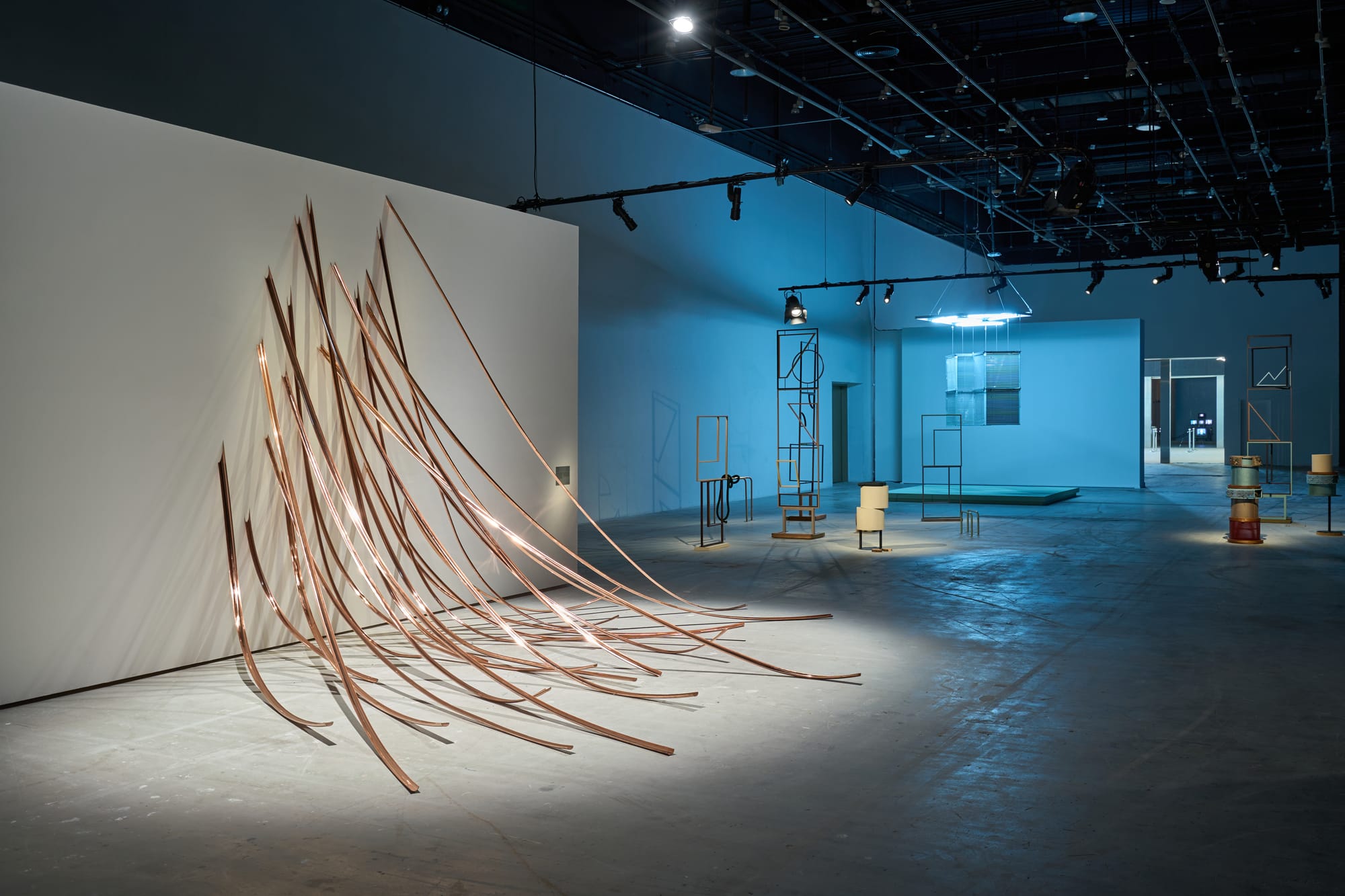
Such themes are particularly resonant with the Gulf’s reliance on migrant workers for logistical skills and services such as construction and delivery. Goen Choi’s Gloria (2024) explores these ideas with a tangible link to the UAE’s infrastructure, featuring a large-scale sculpture of curving, deconstructed copper water pipes. Originally created in Seoul, the series was reimagined here using locally sourced industrial materials, cut open to expose the overlooked systems integral to the urbanization of both Abu Dhabi and Seoul.
This collaboration between the Seoul Museum of Art and the Abu Dhabi Music & Arts Foundation fostered a transnational dialogue, offering diverse perspectives that provided an accessible entry point into Korean contemporary art. The curatorial approach eschewed simplistic categorizations, tracing interwoven genealogies that illuminate how artists navigate the complexities of lived experience. The exhibition also revealed how novel artistic approaches, often rooted in tradition, reflect the multifaceted nature of Korea’s six decades of societal change—characterized by the rise of the digital age, rapid industrialization, transitions from authoritarianism to democratization, and economic growth.
Ravail Khan is an editor and journalist based between Dubai and London with a background in architecture.
